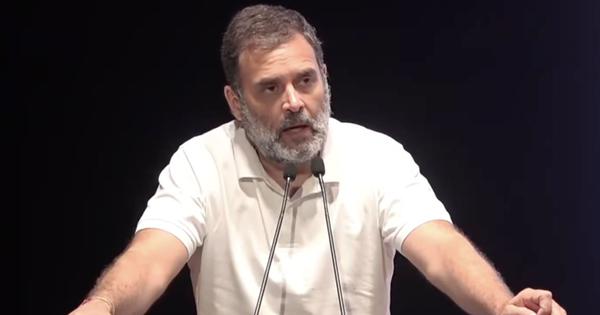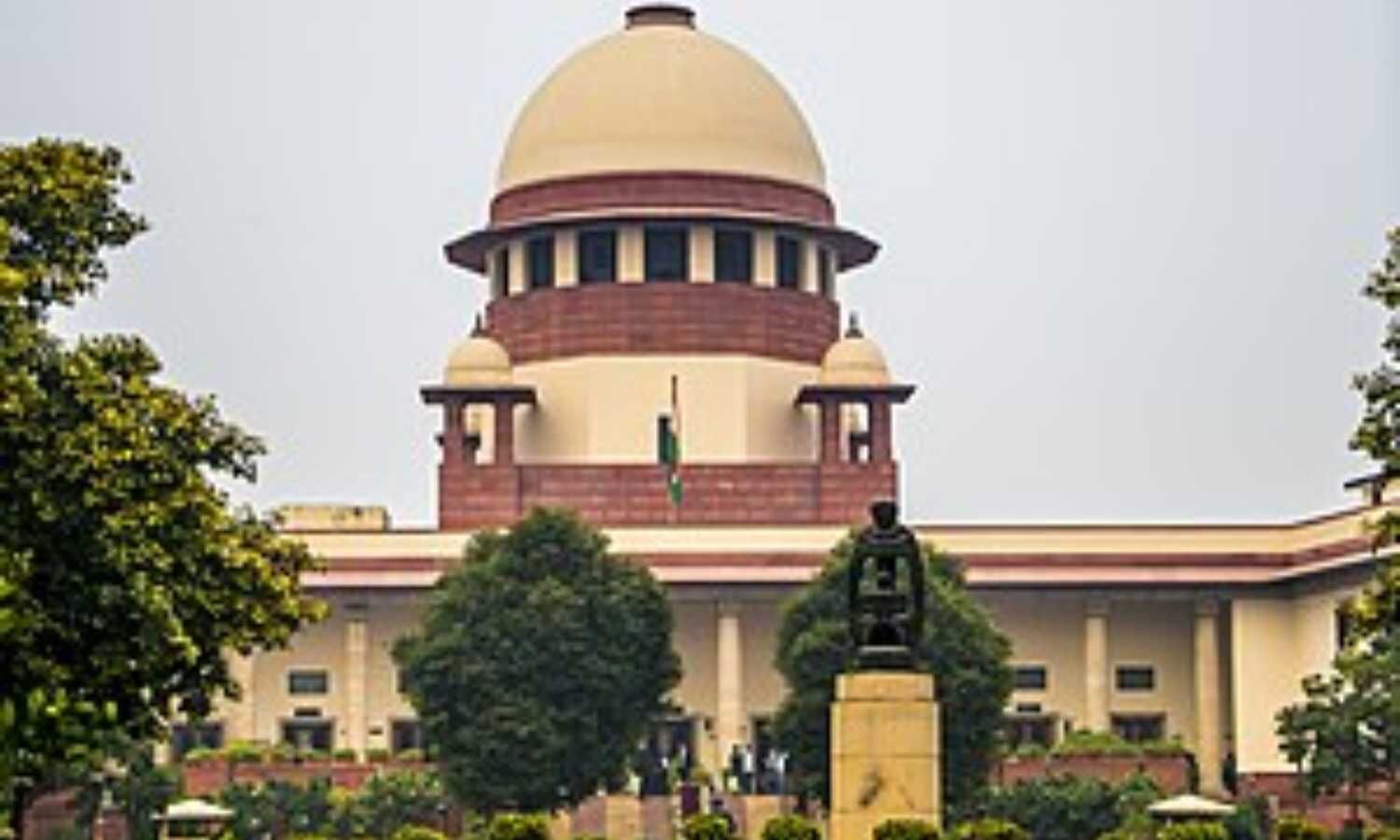From spiritual discipline to political transformation: The story of Ajey, a cinematic tribute to Yogi Adityanath’s journey from monk to leader
Drawing from Shantanu Gupta’s insightful book, this film celebrates Yogi Adityanath’s spiritual journey and his mission to build a stronger Uttar Pradesh. Ajey: The Untold Story of a Yogi is a remarkable cinematic effort that goes beyond a typical biopic to celebrate the life of a leader who has transformed India’s largest state, Uttar Pradesh, through determination, vision, and a deep spiritual foundation. Directed by Ravindra Gautam and based on Shantanu Gupta’s bestselling book The Monk Who Became Chief Minister, the film offers audiences an inspiring look into the life of a man who rose from the serene hills of Uttarakhand to the forefront of Indian politics. The story follows Ajey, played with exceptional dedication by Anant Joshi, a character inspired by Yogi Adityanath. Joshi fully immerses himself in the role, embodying the calm wisdom of a monk and the commanding presence of a political leader. From his early days of spiritual pursuit to his later life as a reformer and administrator, Joshi’s performance captures the many dimensions of Yogi ji’s persona. The legendary Paresh Rawal shines as Mahant Avaidyanath, Ajey’s spiritual mentor, delivering a powerful performance that brings depth to the guru-disciple relationship central to the narrative. The opening act of the film beautifully depicts Ajey’s childhood and his calling to spiritual life. The breathtaking visuals of Uttarakhand’s rivers, forests, and temples set the stage for a journey rooted in faith and service. The film captures the rigorous discipline of the Nathpanthi tradition, showing how Ajey’s spiritual training shaped his character, values, and vision for society. These sequences are emotionally stirring and establish a strong foundation for the later political chapters. As the narrative progresses, Ajey’s transition from monk to public leader is handled with care and nuance. Under Mahant Avaidyanath’s guidance, he begins addressing real-world challenges like lawlessness, corruption, and social discord. The film skillfully portrays how spiritual values can translate into effective governance and public service. Paresh Rawal’s scenes with Anant Joshi are among the film’s most memorable, providing wisdom and gravitas that anchor Ajey’s transformation. Visually, the movie is stunning. The cinematography captures both the serene spirituality of Ajey’s early life and the dynamic, often chaotic energy of political rallies and public meetings. The production design is meticulous, especially in depicting the Gorakhnath Math and the cultural and religious heritage of Uttar Pradesh. These elements ground the film in authenticity and give it a strong sense of place. The background score is subtle yet uplifting, supporting the film’s emotional core without overpowering it. One of the film’s greatest strengths is its faithful adaptation of Shantanu Gupta’s well-researched book. Gupta’s writing has long been praised for presenting Yogi Adityanath’s life with accuracy, depth, and respect. The screenplay draws heavily from the book’s detailed accounts, making the film not only inspiring but also informative. For audiences unfamiliar with Yogi Ji’s life, the movie offers clarity on how his spiritual ideals have influenced his political decisions. The second half of the film focuses on Ajey’s rise as the Chief Minister of Uttar Pradesh and his vision for transforming the state. These sequences highlight the incredible work done under Yogi Adityanath’s leadership. From drastically improving law and order to modernizing infrastructure and promoting industrial development, the film paints a picture of a leader dedicated to progress. It showcases landmark achievements such as new expressways, airports, and ambitious tourism projects like the Kashi Vishwanath Corridor and Ayodhya’s Ram Mandir redevelopment, symbolizing a revival of cultural pride and economic growth. The movie also highlights initiatives like women’s safety programs, better healthcare facilities, and increased investment in education, showing how Uttar Pradesh has moved toward becoming a more developed and empowered state. The depiction of these reforms feels authentic and inspiring, especially when contrasted with the challenges the state faced in the past. These moments celebrate Yogi Ji’s commitment to both spiritual values and practical governance. Anant Joshi’s performance in these later portions is commanding. His portrayal of Ajey in the political arena, addressing massive rallies, meeting common citizens, and making tough administrative decisions, feels natural and compelling. He successfully conveys the calm strength of a leader who draws power not from personal ambition but from service to society. Paresh Rawal continues to shine in supportive moments, reminding Ajey (and the audience) that true leadership is rooted in humility and duty. The film’s message is clear and powerful: that spirituality and politics, often seen as separate, can come togethe



Drawing from Shantanu Gupta’s insightful book, this film celebrates Yogi Adityanath’s spiritual journey and his mission to build a stronger Uttar Pradesh.
Ajey: The Untold Story of a Yogi is a remarkable cinematic effort that goes beyond a typical biopic to celebrate the life of a leader who has transformed India’s largest state, Uttar Pradesh, through determination, vision, and a deep spiritual foundation. Directed by Ravindra Gautam and based on Shantanu Gupta’s bestselling book The Monk Who Became Chief Minister, the film offers audiences an inspiring look into the life of a man who rose from the serene hills of Uttarakhand to the forefront of Indian politics.
The story follows Ajey, played with exceptional dedication by Anant Joshi, a character inspired by Yogi Adityanath. Joshi fully immerses himself in the role, embodying the calm wisdom of a monk and the commanding presence of a political leader. From his early days of spiritual pursuit to his later life as a reformer and administrator, Joshi’s performance captures the many dimensions of Yogi ji’s persona. The legendary Paresh Rawal shines as Mahant Avaidyanath, Ajey’s spiritual mentor, delivering a powerful performance that brings depth to the guru-disciple relationship central to the narrative.
The opening act of the film beautifully depicts Ajey’s childhood and his calling to spiritual life. The breathtaking visuals of Uttarakhand’s rivers, forests, and temples set the stage for a journey rooted in faith and service. The film captures the rigorous discipline of the Nathpanthi tradition, showing how Ajey’s spiritual training shaped his character, values, and vision for society. These sequences are emotionally stirring and establish a strong foundation for the later political chapters.
As the narrative progresses, Ajey’s transition from monk to public leader is handled with care and nuance. Under Mahant Avaidyanath’s guidance, he begins addressing real-world challenges like lawlessness, corruption, and social discord. The film skillfully portrays how spiritual values can translate into effective governance and public service. Paresh Rawal’s scenes with Anant Joshi are among the film’s most memorable, providing wisdom and gravitas that anchor Ajey’s transformation.
Visually, the movie is stunning. The cinematography captures both the serene spirituality of Ajey’s early life and the dynamic, often chaotic energy of political rallies and public meetings. The production design is meticulous, especially in depicting the Gorakhnath Math and the cultural and religious heritage of Uttar Pradesh. These elements ground the film in authenticity and give it a strong sense of place. The background score is subtle yet uplifting, supporting the film’s emotional core without overpowering it.
One of the film’s greatest strengths is its faithful adaptation of Shantanu Gupta’s well-researched book. Gupta’s writing has long been praised for presenting Yogi Adityanath’s life with accuracy, depth, and respect. The screenplay draws heavily from the book’s detailed accounts, making the film not only inspiring but also informative. For audiences unfamiliar with Yogi Ji’s life, the movie offers clarity on how his spiritual ideals have influenced his political decisions.
The second half of the film focuses on Ajey’s rise as the Chief Minister of Uttar Pradesh and his vision for transforming the state. These sequences highlight the incredible work done under Yogi Adityanath’s leadership. From drastically improving law and order to modernizing infrastructure and promoting industrial development, the film paints a picture of a leader dedicated to progress. It showcases landmark achievements such as new expressways, airports, and ambitious tourism projects like the Kashi Vishwanath Corridor and Ayodhya’s Ram Mandir redevelopment, symbolizing a revival of cultural pride and economic growth.
The movie also highlights initiatives like women’s safety programs, better healthcare facilities, and increased investment in education, showing how Uttar Pradesh has moved toward becoming a more developed and empowered state. The depiction of these reforms feels authentic and inspiring, especially when contrasted with the challenges the state faced in the past. These moments celebrate Yogi Ji’s commitment to both spiritual values and practical governance.
Anant Joshi’s performance in these later portions is commanding. His portrayal of Ajey in the political arena, addressing massive rallies, meeting common citizens, and making tough administrative decisions, feels natural and compelling. He successfully conveys the calm strength of a leader who draws power not from personal ambition but from service to society. Paresh Rawal continues to shine in supportive moments, reminding Ajey (and the audience) that true leadership is rooted in humility and duty.
The film’s message is clear and powerful: that spirituality and politics, often seen as separate, can come together to create meaningful change when guided by integrity and vision. By showing Ajey’s journey, the movie offers hope and inspiration at a time when people often feel disillusioned with leadership.
While the film is largely celebratory, it does not feel hollow or forced. Instead, it reflects the optimism of a state undergoing rapid change under a leader determined to break old patterns of corruption and stagnation. Yes, the film takes a largely positive view and does not dwell deeply on controversies, but this is fitting given its purpose as a tribute rather than a critique.
Technically, the film is polished and ambitious. The editing ensures that the story flows smoothly, and while a few political sequences could have been trimmed, the overall pacing keeps the audience engaged. The music, though understated, complements the themes of faith and determination.
Before its release, the film faced controversies with the CBFC (Central Board of Film Certification), with demands for cuts that were ultimately overturned by the Bombay High Court. This victory allowed the film to be released without edits, symbolizing a triumph for creative freedom. The publicity around this case only added to the film’s buzz and brought more attention to its message.
In conclusion, Ajey: The Untold Story of a Yogi is more than just a movie; it is a celebration of leadership, service, and transformation. By blending spirituality with politics, it reflects the philosophy that has guided Yogi Adityanath’s life and work. Through powerful performances, especially by Anant Joshi and Paresh Rawal, and through its faithful adaptation of Shantanu Gupta’s book, the film inspires audiences to believe in the possibility of change.
For those who admire Yogi ji or are curious about Uttar Pradesh’s remarkable progress in recent years, this film is a must-watch. It stands as both a tribute to a leader and a cinematic reminder of what visionary governance can achieve.



























































































































